The Italian highlanders who may have Scottish roots
- Published
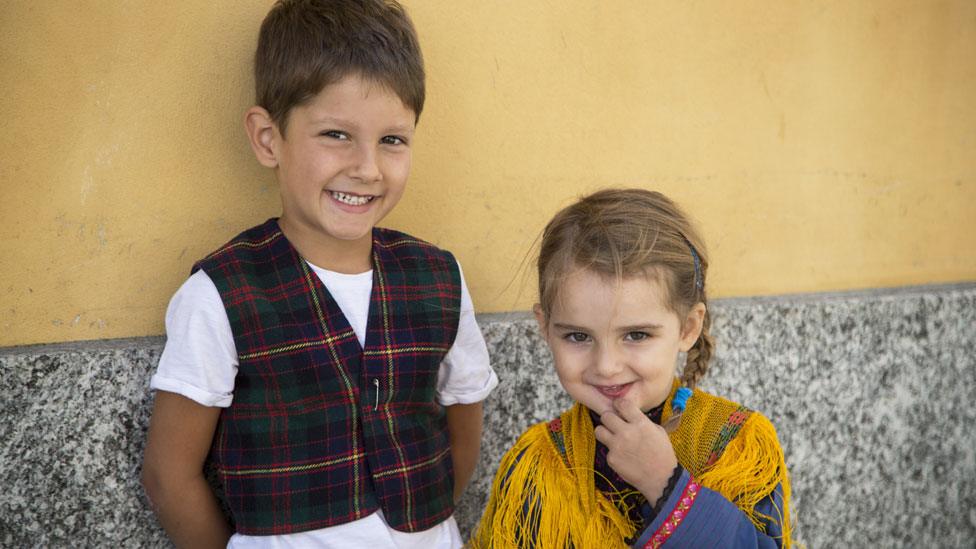
Thousands of Italians emigrated to Scotland in the 20th Century, but it seems that 400 years earlier a group of Scots may have settled in a village in the Italian Alps. So local legend has it… And there are plenty of signs to suggest that maybe, just maybe, it's true.
High up in the mountains of northern Italy, just a few kilometres from the Swiss border, the people of the tiny village of Gurro speak a strange dialect, incomprehensible even to the other villages in the same valley.
They have peculiar surnames, and the women's traditional costume features a patterned underskirt that looks suspiciously like tartan.
One possible explanation is that their forefathers include a unit of Scottish soldiers - the Garde Ecossaise - who served the French King, Francis I, and were defeated with him at the Battle of Pavia, near Milan, in February 1525.
The story goes that while trying to make their way home the Scots stopped in Gurro, where they got snowed in for the winter. Many locals believe they never left.
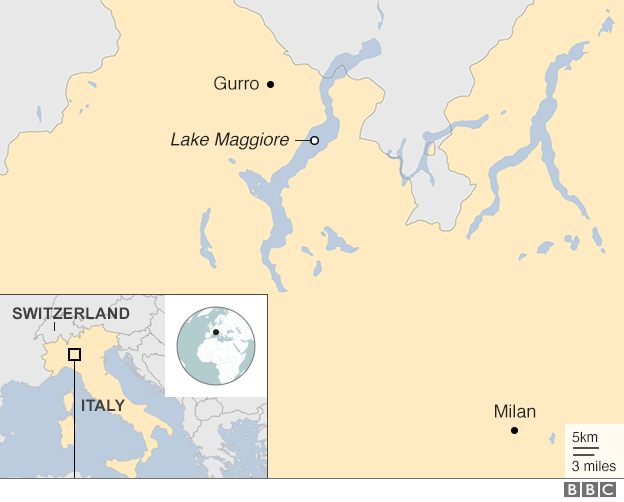
"I've heard talk about this story since I was a child," says Alma Dresti, who was born and bred in Gurro.
"I know it's probably at least part legend but I like to believe in it and I do think there could be some truth in it.
"I like to imagine those strapping young soldiers trying to return home, stopping here, and liking it so much they stayed even once spring had come."
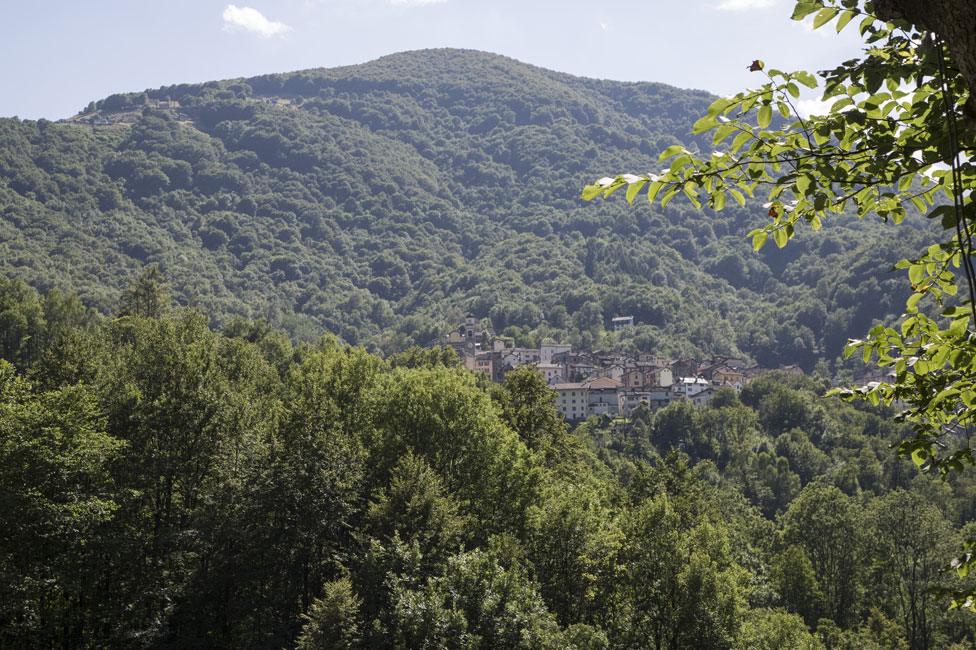
One tale describes how the Scottish visitors stole girls from the next village, celebrating their trophy brides with big parties - before waking the village priest at dawn to legalise their unions.
Alma says this could explain a custom peculiar to Gurro, in which receptions were traditionally held before the marriage ceremony and weddings took place early in the morning.
"This tradition of having the wedding lunch one week before the actual marriage continued until the 1950s," she says. "My parents, who got married in January 1951, did that - they had a big party with all their relatives a week before the wedding, then returned to their family homes, and then a week later got married at 6am in church."
Now 95, Alma's mother could once be found on a sunny bench passing the time of day with other women, all wearing traditional dress, including the tartan underskirt. Some have the surname Patritti, which they believe is derived from "Patrick".

As we walk along the steep cobbled streets, Alma's youngest daughter, Sabrina, points out to me an unusual architectural feature - some of the buildings have wooden supports under the windows, positioned to form what looks like the St Andrew's cross. And she says some consider Celtic-derived words in their dialect to be a sign of Scottish origins.
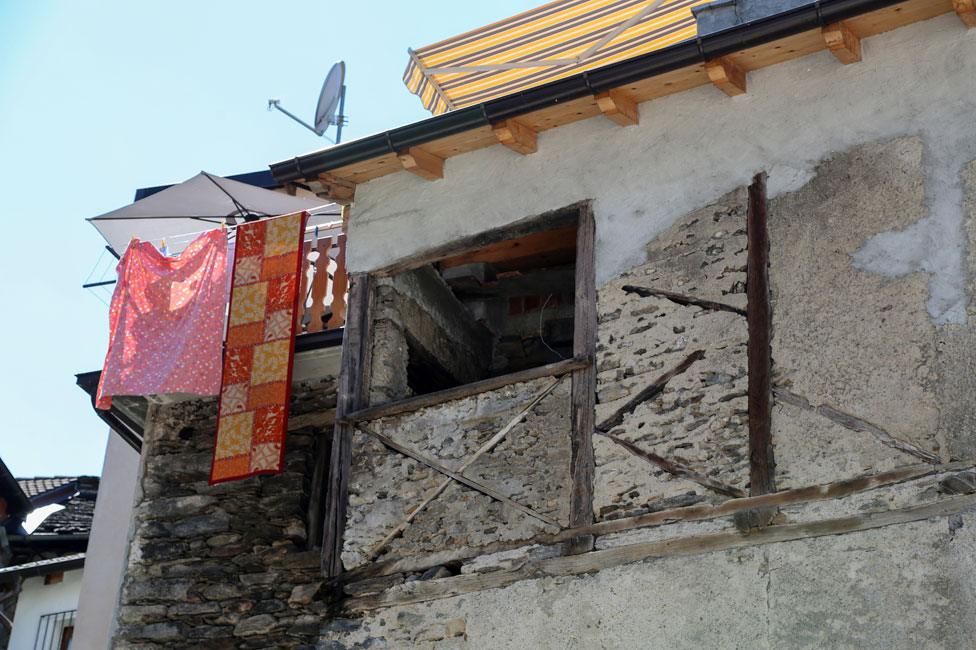
"Especially the way you say 'yes'. It's 'si' in Italian and usually, in other dialects, you just change it a bit, like 'shi'," she says. "Here it's 'aye'. They actually switch the accent so it's more 'ayee' than 'aye' but it sounds like the Scottish way."
There are plenty more fragments of apparent evidence that locals can list. One is a typical folk song with words indicating nostalgia for the sea, although 500 years ago the people of Gurro would never have travelled far enough to see it. And there is a fisherman's knot that must have been taught to the mountain folk by men who fished.

A traditional underskirt (centre) on display in the village museum
All this so impressed a Scottish amateur anthropologist, Lt Col Gayre of Gayre and Nigg, baron of Lochoreshyre, that he embarked on his own investigation.
His book, The Lost Clan - which bears little trace of the disturbing racial views he became notorious for - concluded that the people of Gurro most likely could claim Scottish descent, and in 1973 he symbolically adopted them into his own clan.
Silvano Dresti (no relation of Alma's - it's a common name in Gurro) recalls an unforgettable party that was thrown to celebrate. "There was a lot of excitement and the whole village was decorated with Scottish and Italian flags for the occasion. Being affiliated to a clan made us proud," he says.
Silvano remembers the kilted Scottish baron and bagpipers, and VIP guests including Oscar Luigi Scalfaro, who would later become president of Italy. A BBC Scotland television crew captured it all on film.
Lt Col Gayre arrived with a piper and unveiled a plaque to commemorate the occasion
Silvano was 18 at the time. "I was a bell ringer," he says. "I'd learned the Scottish anthem, Scotland the Brave, which I practised playing on our church bells up in the bell tower."
Alma Dresti remembers that the preparations began long in advance, with people cleaning, tidying, weeding and planting flowers.
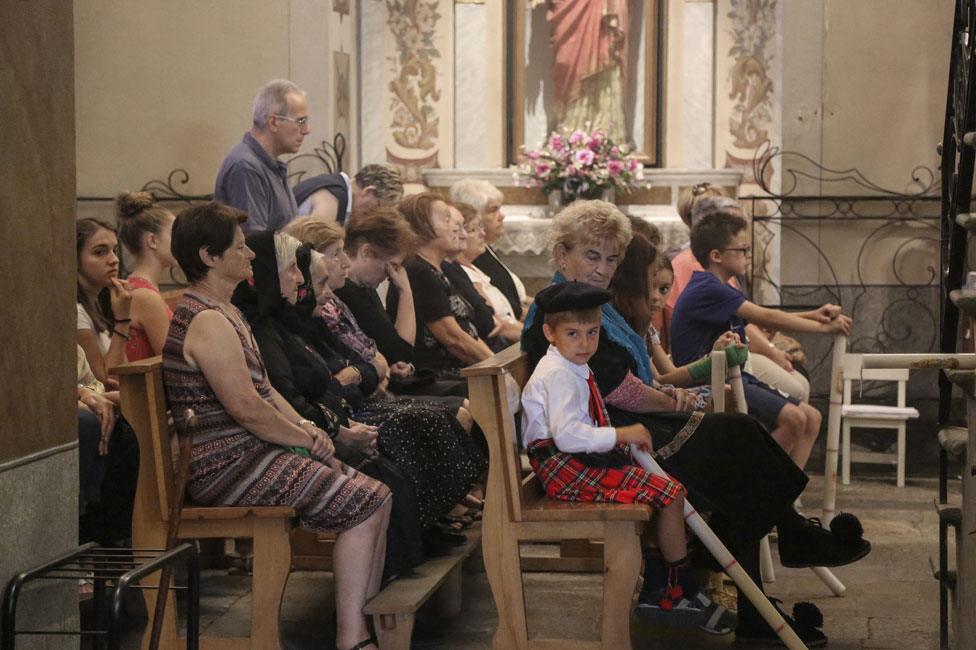
Some parents dress their children in tartan on special occasions
Throughout the summer, groups of men and women gathered in the mountains above the village to practise old folk songs that they performed on the day, she says. She was 21 and her first daughter, just two months old, was the youngest villager in traditional costume that day.
"It was such an emotion to watch the procession from the church square - the baron, the mayor, all the guests and the bagpipe players. It was so different. I still get goosebumps when I think back to it."
Her husband, Adriano Dresti, who was a village councillor at the time, has equally fond - though perhaps hazier - memories.
"We had a party in the municipal offices with the baron. There was an immediate feeling of kinship. He brought three or four crates of whisky!" he laughs.
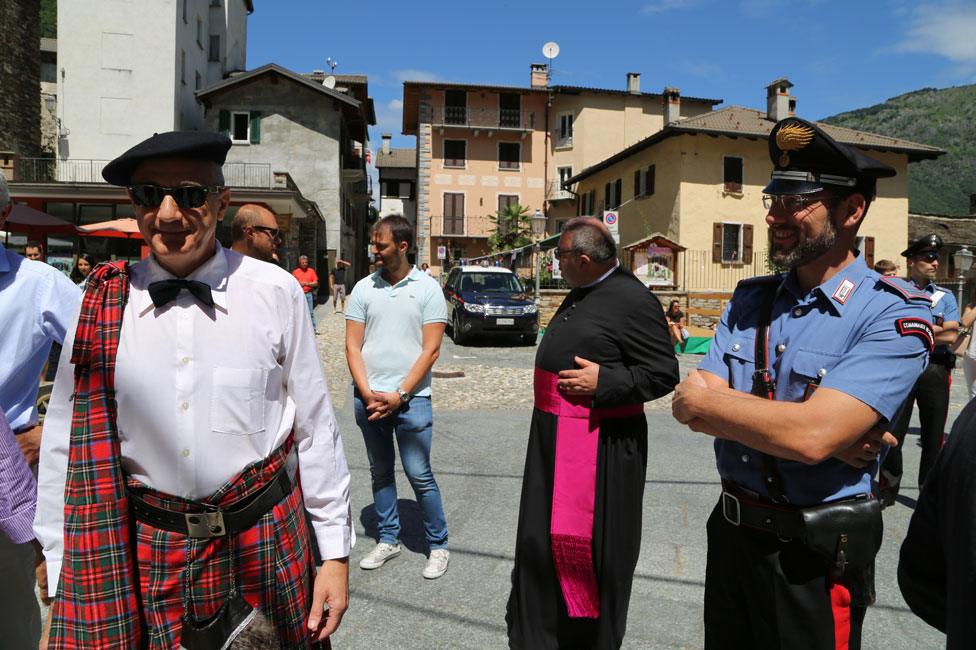
The bar in the village had always been called the Scotch Bar (it's now the circolo degli scozzesi - the Scottish social club) but after the ceremony the bond with Scotland was consolidated.
Silvano Dresti took up the bagpipes, though he is keen to specify that he plays the easier Italian variety, the baghet bergamasco.
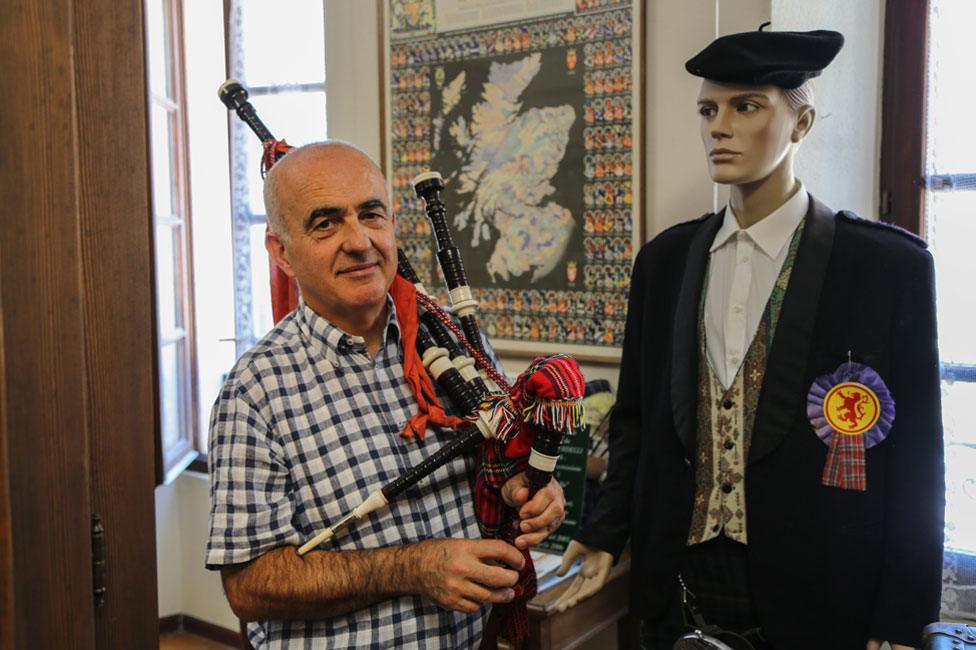
Sylvano Dresti learned to play an Italian version of the bagpipes
His brother, Giorgio, once dropped in on the Gayre family at their home, Minard Castle, near Inveraray. "When he said he was from Gurro, they welcomed him in," Silvano says.
Silvano has not visited the castle but will never forget the moment he finally made it to Scotland. His eyes mist as he remembers getting off the coach before crossing over the border from England. "The guide explained to us, 'Over there that's where Scotland begins'. It was then and there that I felt some emotions rise up inside me that I really can't explain... Scotland... I remember thinking, 'This is the land they say we come from.'"
Stepping off the bus in Edinburgh, he heard the sound of bagpipes. "I followed the sound through the streets until I reached the spot in front of a big store where there was a bagpiper in his kilt and finery. I already felt moved by the sound of bagpipes, but to be in the kingdom of Scottish bagpipes under the castle... that was so powerful."
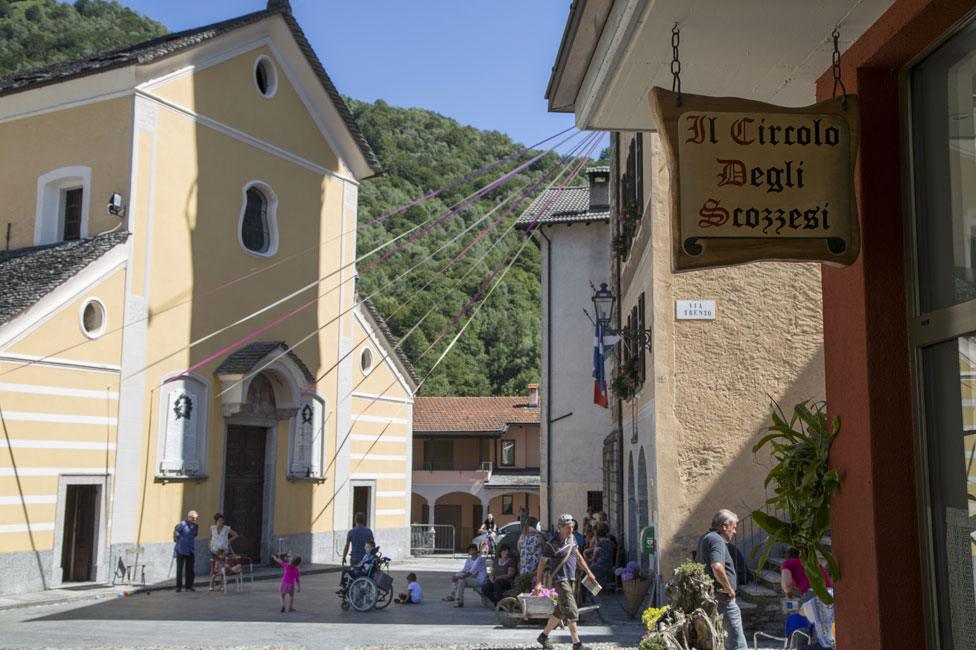
Gurro's "Scottish social club" (the bar) is situated opposite the church
A new Gaelic connection was made when Sabrina Dresti, Alma and Adriano's daughter, paid a visit to northern Scotland and fell in love with Sam MacDuff.
Could the story they so fondly embrace in Gurro convince a sceptical Scot?
"Well, at first I thought it was a joke," Sam says. "But when I read about it, I think it's possible, it's at least plausible that there might have been some roots."
Sam says his uncle, an academic at Edinburgh University and a genealogy and local history enthusiast, did some research of his own. "He looked into some of the claims about the names and historical side and I think there is a reasonable amount of evidence that it might in fact be based on a certain element of truth," he says, cautiously.
His mother-in-law remembers the reaction in Gurro when news of the engagement was announced. "There were jokes like, 'Your daughter's going back to her roots, so now we have a real Scot and it's not just a legend any more!'" Alma says.

Visiting Scotland for the wedding was a moving experience for Alma and Adriano. "It felt a bit like a return to our origins," says Alma. "I think that all humans are happy to discover their origins and know they belong to a group. I felt at home there. I'd love to have confirmation that our story is true."
Adriano says they looked for evidence, but to no avail. "We went to the baron's village. We even went to an old graveyard to see if we could find some names that resembled ours. We didn't find any that were similar but the emotion of that day was nice anyway."
Keen for her wedding to reflect what she regards as their shared Scottish heritage, Sabrina convinced Sam to wear a kilt. "Yeah, for the first time in my life!" says Sam. "He did it mainly for me," laughs Sabrina," but also for this tradition."
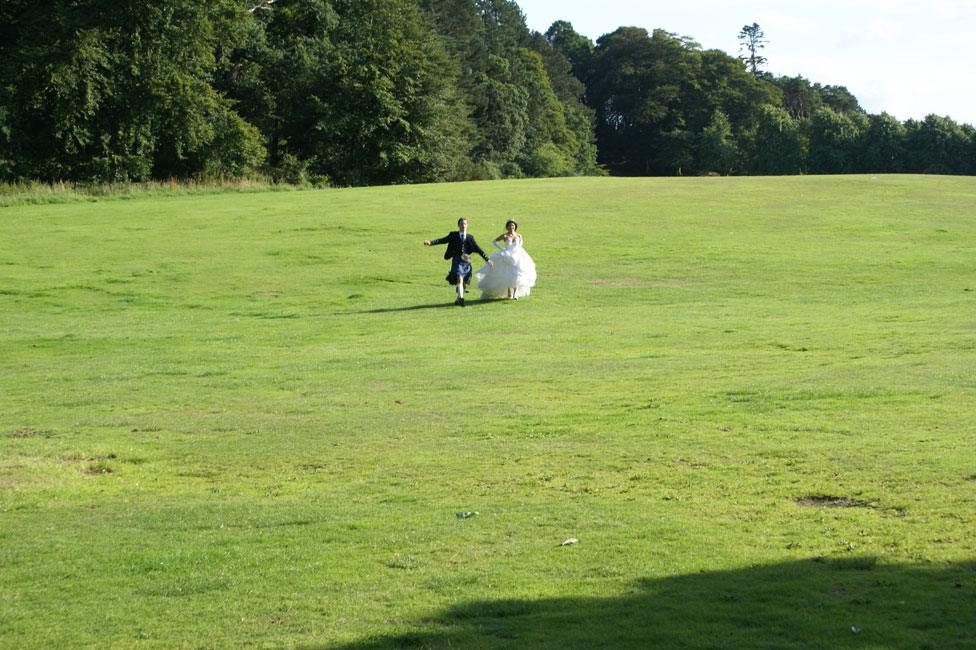
Listen to Dany Mitzman's report on Outlook, on the BBC World Service.
All pictures of Gurro taken by Katia Bernardi
See also: The most Scottish town in Tuscany (2011)
Join the conversation - find us on Facebook, external, Instagram, external, Snapchat , externaland Twitter, external.
